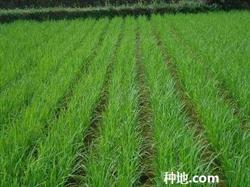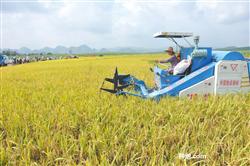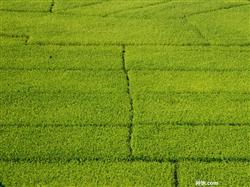What are the benefits of applying silicon fertilizer to rice?

What are the benefits of applying silicon fertilizer to rice? Please introduce that rice is a typical silicon-collecting and silicon-loving crop, which has a high demand for silicon, which is close to the demand for nitrogen, phosphorus and potassium, ranking fourth. The results of experiment and application research show that silicon plays an important role in the growth of rice. The main results are as follows: 1. the application of silicon to rice can enhance the resistance of rice to diseases and insect pests and reduce the harm of diseases and insect pests. The application of silicon in rice can improve the light condition of the plant, reduce the sagging of leaves, increase photosynthesis, form silicified cells, thicken the epidermis cell wall of stems and leaves, increase the stratum corneum, enhance the hardness of stems, lift leaves up, the stems are straight and straight, and the roots are well developed. as a result, the ability of disease resistance and insect control is improved. Especially to rice blast, leaf spot, stem rot, rice bacterial blight, Chilo suppressalis and drill heart worm. After applying silicon to rice, the silicon content of rice plant is increased, and the rigidity of vessel is enhanced, which can increase the ventilation and permeability of the plant, promote the growth of root system, activate the phosphorus in rice field water, promote the movement of phosphorus in rice plant, improve the utilization rate of phosphorus fertilizer, reduce the green lodging caused by excessive application of nitrogen fertilizer, and prevent the rot and premature senescence of rice root. In particular, it plays an important role in the eradication of toxic root rot in rice. Second, the application of silicon fertilizer can improve saline-alkali rice fields and reduce soil pollution caused by pesticides. Silicon fertilizer plays a unique role in the treatment of saline-alkali rice fields. The silicon dioxide and calcium and magnesium ions contained in silicon fertilizer can be quickly added to the soil where a large number of elements are lost. At the same time, these elements in silicon fertilizer can replace a large number of sodium ions accumulated in saline-alkali paddy fields to form new compounds, reduce harmful components, supplement silicon dioxide and calcium and magnesium ions urgently needed for rice growth, enhance rice resistance, and improve rice yield and quality. Agricultural pollution comes from the prevention and control of crop diseases and insect pests. The application of silicon fertilizer can make rice produce a kind of tough silicified cells, which makes it difficult for pests to bite, so as to reduce the harm of diseases and insect pests, reduce the use of pesticides, and thus reduce pesticide pollution. 3. Silicon fertilizer is applied to rice to resist drought and lodging, and the effect of increasing yield is remarkable. Rice is a crop that needs more silicon. Most of the paddy soils in northern China are white serous soil, meadow soil and meadow black soil. In addition, the paddy produced every year in the old paddy field with continuous cropping for many years has to absorb a large amount of silicon from the soil, resulting in serious lack of silicon in paddy fields, poor growth of rice in silicon deficient soil, slender and weak stalks. The leaves should be 20-30 degrees erect type and turn into weeping willow leaves, with few tillers, late heading, more empty grains, decreased 1000-grain weight, poor resistance, easy lodging, easy infection and occurrence of diseases and pests such as rice blast, sheath blight, drill worm and so on. Silicon is an important part of rice crops. In the optimized formula fertilization for rice, people often attach great importance to the application of a large number of element fertilizers such as nitrogen, phosphorus and potassium, while ignoring the coordination of silicon fertilizer. in fact, silicon has a great impact on the growth and development of rice. Although silicon is not a necessary nutrient for all crops, it can significantly increase the yield of rice. Rice is a crop that absorbs more silicon. the content of silicic acid in rice is about 10 times that of nitrogen and 20 times that of phosphorus. Silicon deficiency in rice has become an important factor limiting the increase of rice yield. After absorbing silicon, rice can silicify the epithelial cells of rice plants, stout stems, clean and jerk leaves, reduce shading, increase photosynthesis by 15-20%, increase lodging resistance by about 85%, reduce leaf angle, enhance canopy photosynthesis, enhance drought resistance and water saving, generally save water by about 30%, and increase production by 20% to 30%. Fourth, the application method of silicon fertilizer for rice should be combined with nitrogen, phosphorus, potassium, zinc and other fertilizers as base fertilizer into the soil, preferably before ploughing or before water rake, and there is fertilizer in the whole layer after water rake. The standard dosage of silicon is 1 to 1.3 kg per 667 square meters (1 mu). Click to get massive rice planting technology click to get massive grain planting technology
- Prev

What should be paid attention to when soaking rice seeds with medicament?
What should be paid attention to before and after rice harvest? Please introduce the following four points that should be paid attention to before and after rice harvest. 1. Drainage as early as possible. Drain the paddy fields as much as possible, and dig trenches to dry the lowlands as early as possible if necessary. two。 Ripe for harvest. Manual harvesting controls that more than 95% of rice glumes turn yellow in the field.
- Next

How to dry the rice field?
How to apply balanced fertilizer to rice? Please guide the technology of balanced fertilization for rice is a scientific fertilization method to grasp soil fertility through soil test, to apply fertilizer rationally according to the fertilizer demand characteristics of crops, and to promote high yield, high quality and high efficiency of crops. Including organic fertilizer and chemical fertilizer, nitrogen fertilizer.
Related
- The first cup of black tea in spring, the flavor and history of tea gardens in Kenya, Africa
- The computer can not only choose potatoes, but also grow tea rice. AI will grow winter oolong tea champion.
- It is not only the inflated tea bitten by insects, but also engraved with the four seasons tea in Beipu.
- The Oriental Beauty Tea Festival in Zhuxian County takes the stage at the weekend to experience the plus-size feast of oil tea.
- & quot; Oriental Beauty Tea & Exploration of Emei in Hsinchu, the hometown of quot;
- The new variety of strawberry "Tainong 1" dessert is the first choice with mellow aroma. Crimson gorgeous
- History of Tea in Taiwan: from Wild Inner Mountain to Export Tea Garden
- Two types of Taiwan Oriental Beauty Black Tea won the British three-Star Award for Childhood Tea Xiang Zhang Jiaqi changed from pilot to champion tea maker.
- Banana species and varieties: the planting history of Taiwan Xianren banana and dwarf banana is long, is banana disease resistant?
- Coffee planting Technology: Qianjie Coffee from Seedling to harvesting

